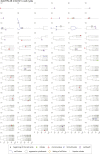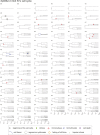Chromosome instability induced by a single defined sister chromatid fusion
- PMID: 33106324
- PMCID: PMC7652394
- DOI: 10.26508/lsa.202000911
Chromosome instability induced by a single defined sister chromatid fusion
Abstract
Chromosome fusion is a frequent intermediate in oncogenic chromosome rearrangements and has been proposed to cause multiple tumor-driving abnormalities. In conventional experimental systems, however, these abnormalities were often induced by randomly induced chromosome fusions involving multiple different chromosomes. It was therefore not well understood whether a single defined type of chromosome fusion, which is reminiscent of a sporadic fusion in tumor cells, has the potential to cause chromosome instabilities. Here, we developed a human cell-based sister chromatid fusion visualization system (FuVis), in which a single defined sister chromatid fusion is induced by CRISPR/Cas9 concomitantly with mCitrine expression. The fused chromosome subsequently developed extra-acentric chromosomes, including chromosome scattering, indicative of chromothripsis. Live-cell imaging and statistical modeling indicated that sister chromatid fusion generated micronuclei (MN) in the first few cell cycles and that cells with MN tend to display cell cycle abnormalities. The powerful FuVis system thus demonstrates that even a single sporadic sister chromatid fusion can induce chromosome instability and destabilize the cell cycle through MN formation.
© 2020 Kagaya et al.
Conflict of interest statement
The authors declare that they have no conflict of interest.
Figures



















References
-
- Akaike H. (1974) A new look at the statistical model identification. IEEE Trans Automat Contr 19: 716–723. 10.1109/tac.1974.1100705 - DOI
Publication types
MeSH terms
LinkOut - more resources
Full Text Sources
